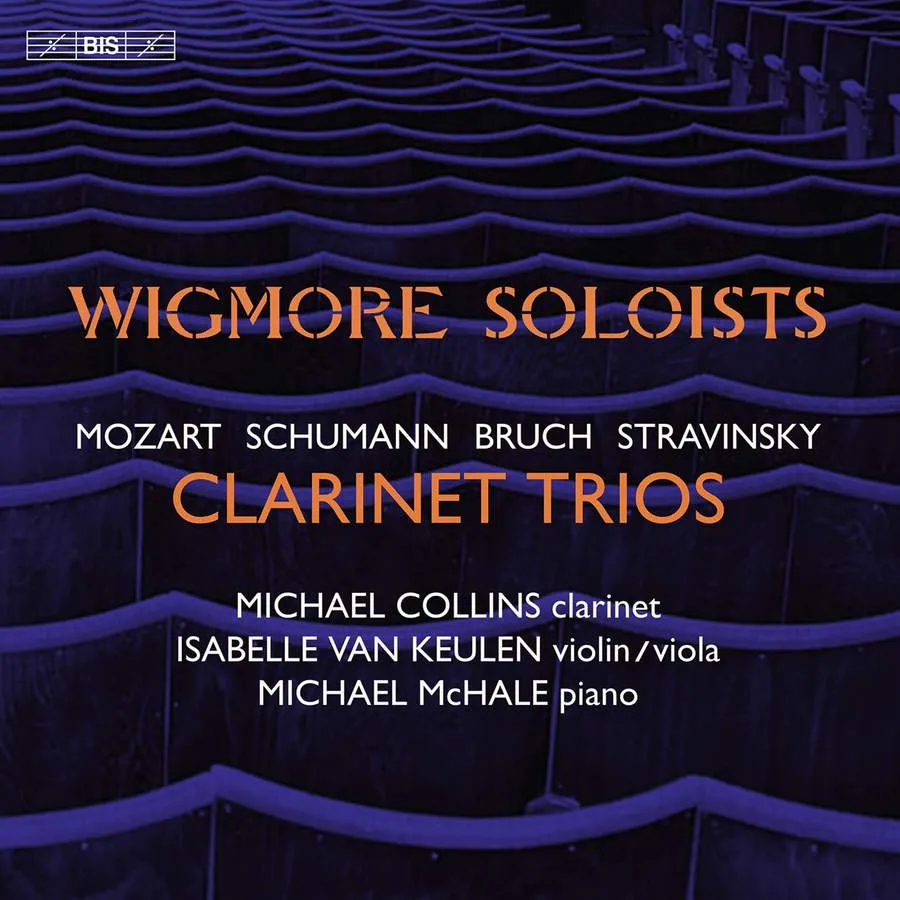
Bruch • Mozart • R Schumann • Stravinsky Bruch: Eight Pieces, Op. 83 – Nos 5-8; Mozart: Clarinet Trio in E, K498; R Schumann: Märchenerzählungen, Op. 132; Stravinsky: The Soldier’s Tale – Concert Suite Wigmore Soloists: Michael Collins (clarinet), Isabelle van Keulen (viola, violin), Michael McHale (piano) BIS BIS-2535 (CD/SACD) 68:45 mins
Supposedly roughed out during a game of skittles, the Trio in E flat for clarinet, viola and piano, K 498, is a unique structure in Mozart’s output: a concise, preludial-feeling sonata movement, a more developmental minuet and trio, and a long, leisurely final rondo, the principal melody of which could almost be by Schubert. With peerless clarinet tone from Michael Collins, volatile viola phrasing from Isabelle van Keulen and bright-fingered pianism from Michael McHale – three founding members of the recently formed Wigmore Soloists – the immaculate reading here lacks perhaps only a touch of wistfulness in the more mysterious turns of the second movement trio.
There is plenty of sentiment in their renderings of the four Märchenerzählungen (Fairy Tales) for the same line-up, composed rapidly for domestic music-making in 1853, just a year before Schumann’s final breakdown and breathing an air of slightly fraughtgemütlichkeit. Yet the real finds in this most rewarding programme are the last four of Max Bruch’s Eight Pieces, Op. 83: refractions of the influence of Mendelssohn and Brahms, composed for his clarinet-playing son as late as 1910, yet proving movements of real substance and character. After which, the sardonic astringencies of Stravinsky’s L’Histoire du Soldat, in the five-movement suite he transcribed for clarinet, violin and piano, come as a shock. Yet these players prove as punchily precise in Stravinsky’s fiendishly tricky rhythms as they are passionate in Bruch’s No. 5 ‘Rumänische Melodie’. The recording is close and clear.
Bayan Northcott